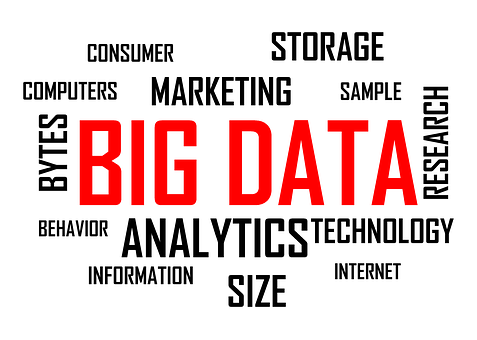The modern telecom sector is currently facing a massive range of commercial challenges, like a sharp loss in revenue in critical segments, including text messaging and phone, over the previous five years, combined with fierce rivalry from the top service providers.
Thus, they must commit to undergoing a digital transition to remain competitive in 2022. For this, they are utilizing technologies like the Internet of Things (IoT), Mobile Edge Computing (MEC), and 5G to bounce back from the pandemic impact and take a daring stance in the future.
Besides, the telecom sector is transforming its communication services, content, and consumer channels into digital ones, creating a new value ecosystem and a technological revolution in a linked market. On that note, here are the top technology developments that are drastically altering the telecom sector.
- Machine Learning and Artificial Intelligence
Managed IT technologies like Artificial intelligence and machine learning will continue to be extensively used in the telecom sector in 2022 and beyond. One of the essential telecommunications trends now in use is this one.
Telecom is one of the many businesses that must have statistical data. Using AI-powered tools like machine learning and chatbots can significantly accelerate the growth of the telecom business. Appropriate tools enable firms to produce priceless data, which provides a highly positive customer experience. In addition, telecom can anticipate valuable information to keep operations moving correctly.
Besides, virtual assistants and chatbots powered by AI ensure adequate customer support. The capacity to deliver customized customer interaction services based on user information is the cause. Telecom can forecast future trends and continuously check its services and products for flaws and bugs thanks to AI-based analytics.
That said, implementing these technological changes can be challenging. Hence, it would be wise to outsource telecom business solutions to make this process easier. Such services identify growth opportunities and leverage technology to help companies stay connected with their users across channels.
- 5G
Even though there is a lot of dispute about 5G, it does not lessen the significance of 5G in today’s telecom industry. Thanks to technology, businesses will benefit from real-time insights never previously possible and complete control over their goods, services, and assets.
Additionally, 5G enables the telecom industry and other businesses to reinvent how they run and provide their services. All industries can undergo a technological revolution, including manufacturing, healthcare, and others.
It makes sense that the GSMA estimates that 5G would create $700 billion in economic value. To bring all the capabilities together, telecom must do more than offer a network. Integrating 5G with edge computing and IoT devices is a common step in this process.
- Internet of Things
The IoT sensors and devices are impacting most of the economy’s sectors. It improves management, promotes the level of living for individuals, and allows businesses to profit more. IoT can also help governments reduce spending on information technology services (IT). New management opportunities are also made possible by connectivity between sensors, equipment, computing components, and infrastructure.
For instance, decentralized operations, condition-based monitoring, and predictive maintenance provide effective connectivity between IoT devices. Furthermore, IoT automates manufacturing procedures in this way, enabling the adoption of Industry 4.0 ideas in the telecommunication industry.
- Big Data
With IoT sensors in mobile devices and apps, telecom companies can collect vast amounts of data, building informational pools. Thus, businesses must ensure that their network can effectively move massive volumes of data while supporting emerging technologies.
The telecom sector may use the gathered data to develop critical business insights and comprehend client usage trends. In the end, the data can help to enhance customer support, assess brand-new items, and track and improve the network. Big data enables firms to grow stronger and use it to their advantage in the marketplace.
- Edge Computing
Instead of using a centralized faraway cloud, edge computing puts data computation and storage closer to the source of the data. This enables industrial manufacturing organizations to enhance their computing capacity by connecting devices with edge data centers at reduced prices while reducing latency, increasing bandwidth, and simplifying maintenance.
Modern applications like cloud gaming and VR demand low latencies and high speeds. Edge Computing dramatically increases the quality of experience for end-users and minimizes data exchange needs.
- DevOps
Even though it isn’t particularly new for telecoms, this is one of the telecommunications trends we will likely follow for many years.
Telecom DevOps is quickly moving toward virtualization systems. Telcos can continuously implement new, cutting-edge, and highly functioning DevOps. It is necessary to implement this change while maintaining network stability, though. These telecom processes may operate more effectively and in unison using DevOps.
- Cybersecurity
Combating security issues is challenging due to increased low-security IoT devices, cyberattacks, new CPU hardware vulnerabilities, and growing reliance on computer infrastructure. In addition, the industrial network consists of systems that need constant management to develop security against cyber threats. Still, these methods often clash with the availability and reliability criteria essential for the network. By allowing systems to stay ahead in the face of threats or weaknesses, startups develop industrial networks.
Closing Note
These telecommunications sector advances are changing how you communicate by allowing a worldwide connection. Even though virtual meetings can’t wholly replace in-person interactions, remote work will continue to stay, especially as big organizations pledge to reduce business travel and rely more on telecommunications-backed online services connected devices. Telcom providers may create a resilient and adaptable delivery organization to hasten the introduction of new product and service offerings and foster business agility by utilizing automated data processes.
